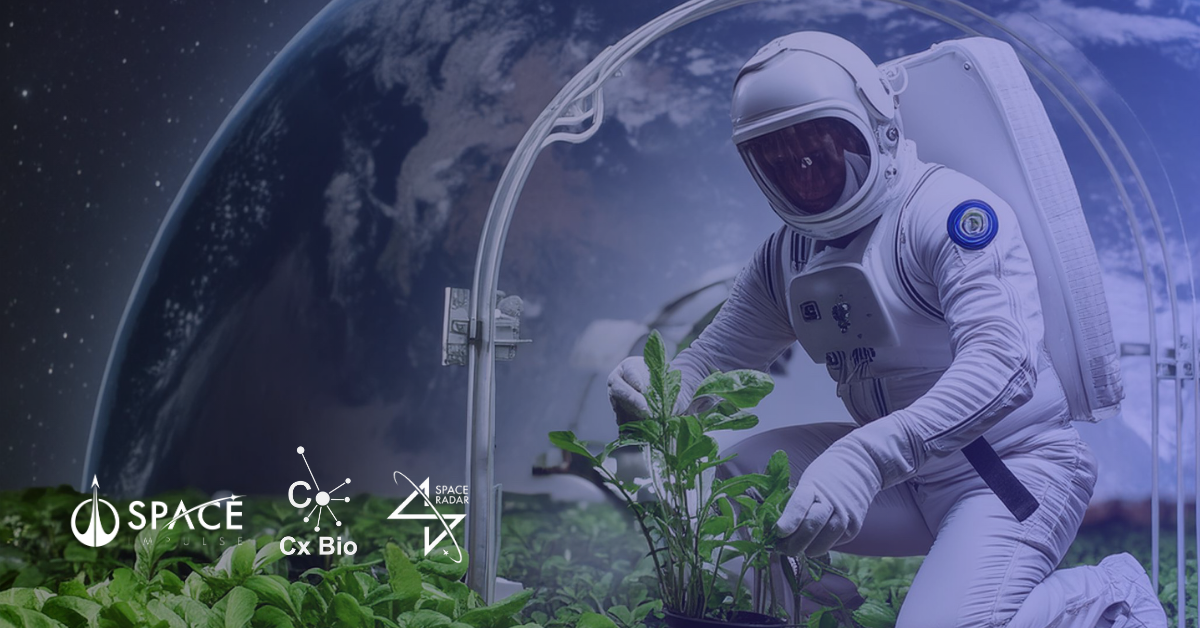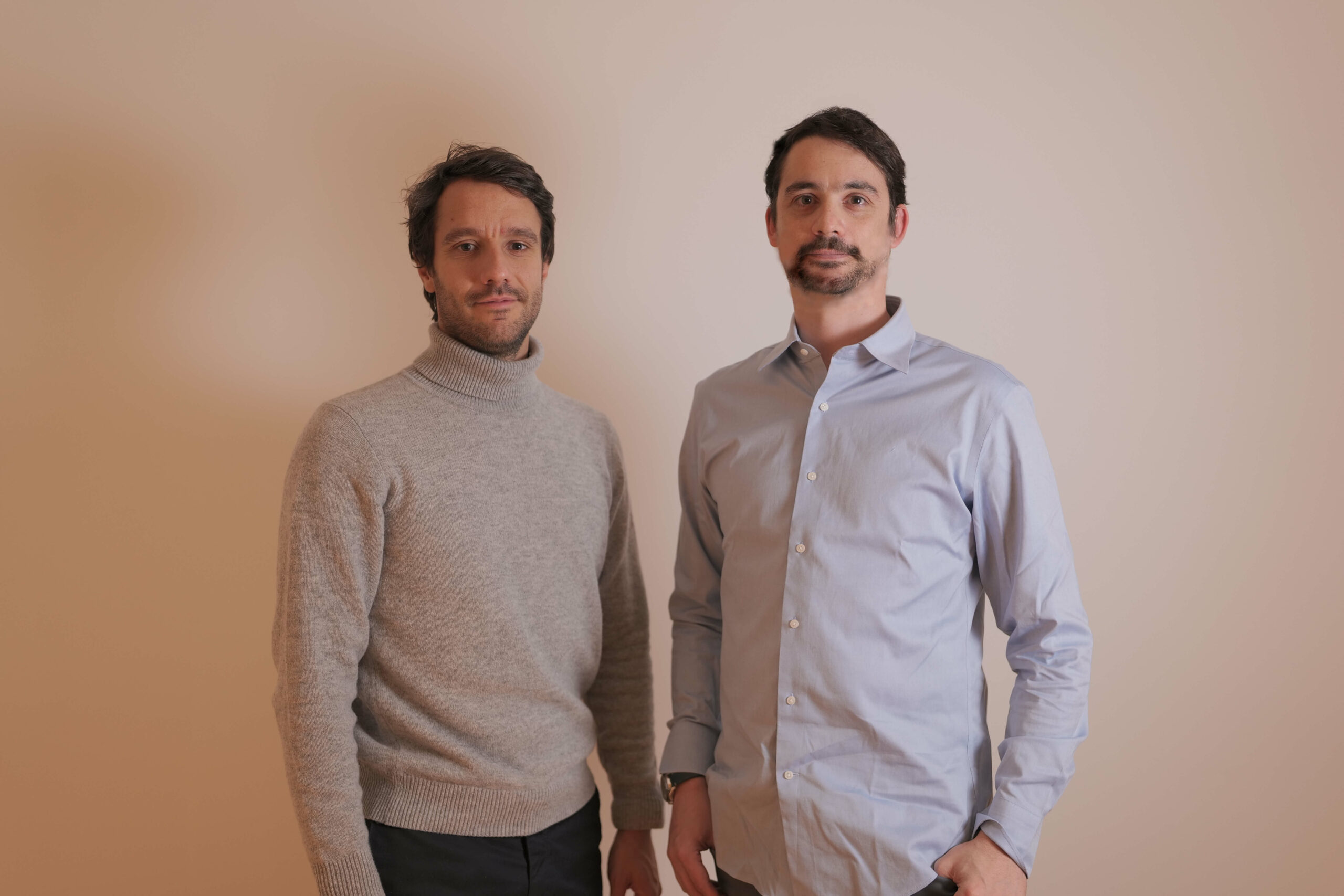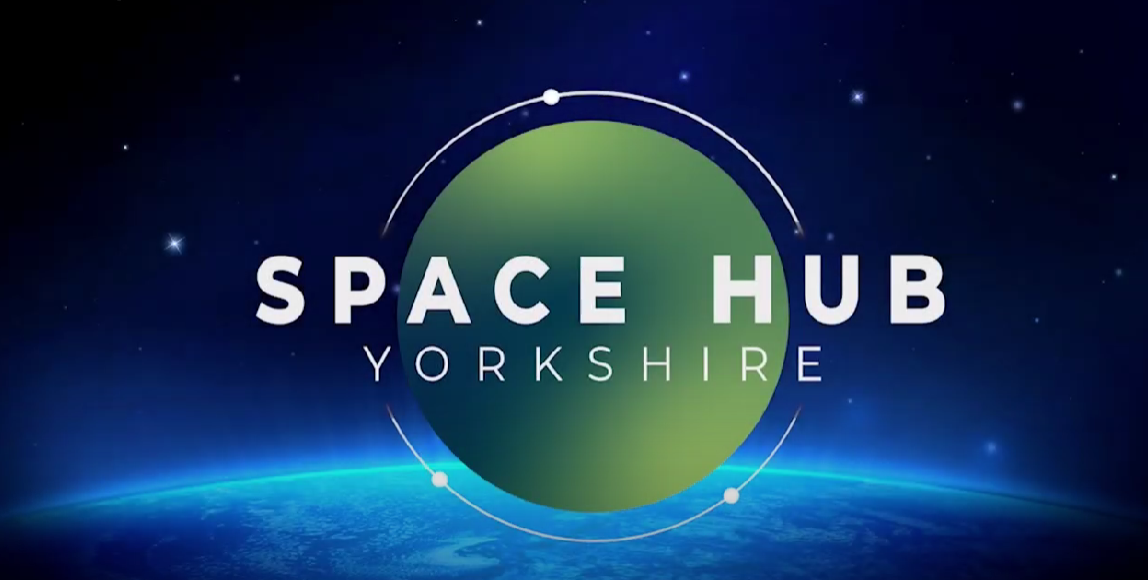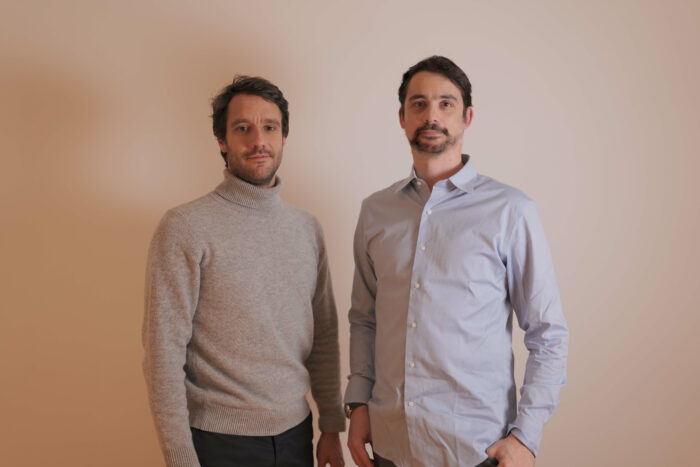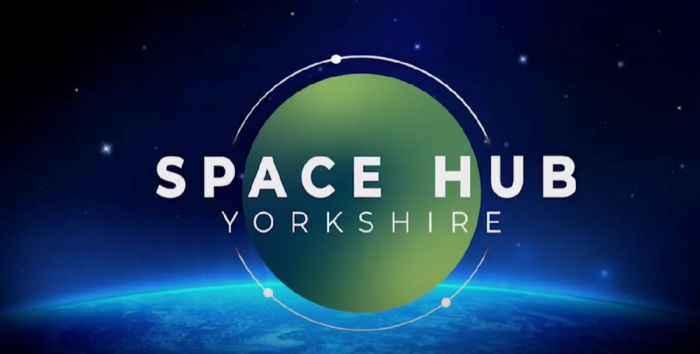The Space Impulse, Cx Bio, and SpaceRadar teams have collaborated to develop a comprehensive breakdown of the space biotech industry. Want to learn more about this exciting sector? Download the full market map.
The space industry is evolving, with private companies leading the charge in space exploration and technological innovation. As the industry matures, a new frontier is emerging: space biotech.
McKinsey estimates that the pharmaceutical industry may capture as much as ~$3-4bn of additional revenue growth if it successfully collaborates with the space biotech industry (ref).
Growth in the space biotech market is driven by the unique conditions of space, such as microgravity, which can influence biological processes in ways that are not possible on Earth. Specifically, space biotech market growth is driven by (i) microgravity research (microgravity conditions providing unique opportunities for biomedical research), (ii) space agriculture (developing sustainable agricultural practices for long-term space missions), (iii) biomanufacturing (production of pharmaceuticals in space), and (iv) international collaborations and continued government funding for research projects.
To better understand the space biotech landscape, the Space Impulse, Cx Bio, and SpaceRadar teams have worked together to develop a comprehensive market map of the industry. The resource provides information on over 90 space biotech companies, including:

- Market segment
- Funding
- Company size (# employees)
- Location
- Deals and partnerships
- Project and mission details
Category Details
In creating a coherent and contextual industry map, we categorised the market into distinct segments based on proximal focus areas. This approach helps identify the specific niches within space biotech and provides clarity for stakeholders looking to understand or invest in this emerging field. The market segments are:
Space Bioprocess and Food Production
- Terrestrial Agri-Food Companies Expanding to Space
Companies traditionally focused on Earth-based agricultural technologies now leveraging space environments for enhanced food production.
- Single Mode Space Food (Plants/Cellular Agriculture)
Innovations in growing plants or cellular agriculture specifically designed for space applications.
- Complete Bioregenerative Life Support Systems (BLSS)/Controlled Ecological Life Support Systems (CELSS)/In-Situ Resource Utilization (ISRU)
Comprehensive systems designed for sustainable life support in space, utilising local resources and regenerative processes.
Space Manufacturing
- Non-medical Biomanufacturing
Production of non-medical biological materials in space, benefiting from unique microgravity conditions.
- Space Bio-Payload Infrastructure and Services
Companies providing infrastructure and services for biological payloads in space, including space labs and bio-production facilities.
Space Health and Medicine
- General
Broad medical applications of space biotech, encompassing various health-related innovations.
- Cell Therapy
Development and testing of cell therapies in space to understand their potential and efficacy.
- Organoids and Tissues
Research and development of organoids and tissue engineering in space, aiming to overcome Earth-bound limitations.
- Drug R&D and Manufacturing
Drug discovery, research, and development processes that are conducted in the unique environment of space.
- Big Pharma in Space/Biotech
Major pharmaceutical companies that are extending their biotech research into space to exploit the unique advantages offered by microgravity.
Other
- General, DNA Storage
Various other applications of space biotech, including DNA storage and other emerging technologies not captured in the main categories.
Space Bio Market Drivers
The space biotech market is well-positioned for significant growth, driven by the need for sustainable life support systems, advanced biomanufacturing capabilities, and innovative health solutions for long-duration space missions. Companies and organizations across the globe are pioneering technologies that support space exploration and have the potential to revolutionize biotechnology on Earth. As these technologies mature, the space biotech market will continue to expand, offering new opportunities for scientific discovery and commercial ventures.
Space as a Unique Experimental Laboratory
Going back to the early days of spaceflight, researchers have sent up biological experiments to leverage the unique conditions of space that cannot be replicated on Earth. Since the earliest pre-Mercury missions in the late 1940s that identified the need for life support systems (ref), most life sciences activity in space has been experimental and institutionally funded. But with the recent uptick in commercial space activity, the space shuttle and ISS have begun welcoming private companies and their commercial life science experiments. For example, in early 2024, South Korean pharmaceutical Boryung contributed $60M to a joint venture with Axiom to develop space R&D capabilities (ref).
It should be noted that while a shift from experimentation to biomanufacturing offers attractive new business models, there will continue to be a demand for space life sciences R&D, especially from biomedical fields.
Advanced Biomanufacturing Capabilities
The unique microgravity environment of space provides opportunities for groundbreaking research and biomanufacturing processes that are not feasible on Earth. The space bio market is at the forefront of developing advanced biomanufacturing capabilities, such as tissue engineering, regenerative medicine, and biofabrication, with potential applications in various fields.
Varda Space Industries and several big pharma players like Merck Life Science and Bristol Myers Squibb are at the forefront of drug manufacturing in space. Varda’s successful demo mission to return the microgravity crystallised antiviral drug ritonavir preceded its $90 million series B funding in April 2024 (ref). Merck is conducting protein crystallization experiments on the ISS for drug development. Other companies like Lambda Vision are working on manufacturing artificial protein-based retinas (ref), and Aleph farms, supported by SpacePharma and the ICE Cubes service, demonstrated cultivated meat in space aboard the Axiom’s Ax-1 mission (ref).
Innovative Health Solutions for Long-Duration Space Missions
Prolonged exposure to the harsh conditions of space, including microgravity, radiation, and isolation, can have detrimental effects on human health. Research and development in the space bio sector are innovating health solutions, including disease modeling, drug development, and personalized medicine, to address the unique challenges faced by astronauts during long-duration space missions.
Space Tango is working toward these solutions by conducting research aboard the ISS to develop therapies for muscle wasting and bone loss.
The Need for Sustainable Life Support Systems
As space exploration ventures further into deep space and aims for long-duration missions, there is a growing demand for sustainable and self-sufficient life support systems. Organizations within the space bio industry are working to meet these needs with solutions for recycling resources, producing food, and generating essential materials, enabling a closed-loop ecosystem for space habitats. The European Space Agency’s (ESA) Micro Ecological Life Support System Alternative (MELiSSA) program has led to several commercial spin outs over the years (ref), but private organisations are set to accelerate progress.
Companies leading the charge in this include Blue Origin and Sierra Space who are developing the space station Orbital Reef. Orbital Reef will be a commercially owned and operated space station with regenerative life support systems for long-term habitation. Sierra Space is working on the ECLSS (Environmental Control and Life Support System) for NASA’s Artemis lunar lander. The company’s contributions include systems for air revitalization, water recovery, waste management, and food production (ref). While limited at first, over the long term their customer base will expand with private expansion of habitable space facilities in orbit or on other planetary bodies.
Driving Innovation and Technological Advancements
The space bio industry is driving innovation and technological advancements that have applications in space exploration and on Earth. Space research’s unique challenges and constraints foster the development of cutting-edge technologies and solutions that can be adapted for various industries, including healthcare, agriculture, and manufacturing.
SpacePharma and ResearchSat are leaders in this space. SpacePharma is developing miniaturized lab technologies for drug discovery and testing in space, with potential applications in personalized medicine on Earth. ResearchSat provides satellite-based research platforms for conducting experiments in microgravity, enabling new avenues for materials and product development.
Notable Funding Rounds
- Varda Space Industries – $90 million in Series B in April 2024
- LambdaVision – seed funding of an undisclosed amount in May 2024
- Space Lintech – 4 billion won (~$3M) in investment in April 2024
- MAIA FARMS, a winner of NASA’s Deep Space Food challenge – $2.3 million in April 2024
Key Mergers and Acquisitions
- Nanoracks was acquired by Voyager Space in 2021 for an undisclosed amount
- Redwire Space formed from merger of Adcole Space (founded 1957) and Deep Space Systems (founded 2001), and the acquisition of Made In Space in 2020
- Space Tango acquired Faradine Space Systems in 2022
The Space environment and its applications
The space environment provides both extreme challenges and opportunities. As humans navigate further away from home, we need better science and technology to support them. Many constraints in spaceships reflect obstacles we are increasingly facing on Earth, including the need for circular use of resources and the minimization of water and energy use. Being in the crucible of the space environment forces engineers to innovate and develop new solutions which can be applied on Earth.
Hence, while organizations develop technology for space these often have significant potential for terrestrial applications. Indeed, scarcity incentivizes innovation. The harsh constraints in space encourage ingenuity in design. From reducing system mass and power requirements to closing loops so that waste is maximally up-cycled, designing space-based bioprocessing systems can catalyse optimization here on Earth.
However, the challenges of space for some can also be advantages for others. For example, while microgravity makes aeration more complex in bioreactors it can benefit other processes. In fact, space is uniquely suitable for high-value biological RnD.
Gravity and Protein Crystals
Microgravity has a profound impact on the way protein crystals form. The absence of disruptive convection forces allows higher quality, more uniform crystals to be grown. This is a key advantage for complex molecules or proteins that can be difficult to crystallise on Earth. Crystalizing proteins is crucial for characterising the 3D structure of proteins, but it also can be used to deliver protein-based drugs in more effective ways. Due to microgravity leading to larger and more regular crystals, protein crystal growth experiments have represented the largest category of experiments conducted onboard the ISS. This research has supported drug discovery for over 20 years (ref), including the development of the highly successful therapeutic Keytruda by Merck.
Several companies plan to insert in-space protein crystallisation into the dosage manufacturing process. Currently, only a few drugs are delivered in crystalline form, however, doing so provides many advantages (ref). Protein crystals have a higher bioavailability, improved resilience to chemical, physical and proteolytic enzyme degradation, they allow high concentrations with low viscosity thanks to reduced protein-protein interactions, and importantly reduced formation of immunogenic protein aggregates (ref).
These features can yield many benefits, including longer shelf life, broader distribution and stocking for more remote areas, and avoiding costly cold chain supply logistics. Delivering drugs in crystalline form also results in an improved patient experience with less frequent dosing due to sustained release of the therapeutic agent (ref) and the ability to self-administer sub-cutaneous doses instead of an invasive and costly intravenous delivery (ref, ref, ref). For example, insulin is one of the few protein-based drugs delivered in crystalline form and is easily self-administered with relatively lower frequency in dosing.
Despite the advantages and proven track record, the difficulties in producing crystalline proteins on Earth have made them uncommon in pharmaceuticals. This could change with space-based production, a market in which startups Varda Space and BioOrbit, ICE Cubes Kirara service, and Redwire’s collaboration with Eli Lilly aim to support with their protein crystallization production platforms.

Gravity and Organoids
Another rapidly growing trend in space biotechnology is using microgravity to grow 3D cell cultures called organoids and spheroids. Unlike cell cultures on Earth, LEO enables the growth of 3D tissues without the need for artificial external scaffolds which is an expensive process that yields systems of lower quality than those in space.
In these experiments, self-organizing stem cells are grown to investigate the properties of tissues. The organoids grown in the microgravity environment of space can be brought back to Earth for additional analysis. Furthermore, these organoids can be exposed to various drugs in space to study the effects on different biological processes and disease pathologies. In space medicine the space environment is of particular interest to the field of geroscience, the science of aging and longevity. Being in orbit accelerates many of the processes associated with aging, which is attracting interest from the growing aging therapeutics market (ref).
Organizations like NASA and the University of Zurich are leveraging LEO to study organoids. NASA is currently conducting an organoid research project on the ISS for drug discovery into neuroinflammation, using the BioServe platform (ref). The University of Zurich’s Space Hub has flown two ISS experiments to grow organoids and has spun out a company called Prometheus Life Technologies.

Microorganisms as Bio-factories
Growing diverse microorganisms could unlock various bioprocessing capabilities, from growing food and biomaterials to recycling waste organic matter and even recombinant protein synthesis. Microgravity can have wide-reaching impacts on the growth of cell cultures with some simulated microgravity experiments suggesting enhanced protein production thanks to upregulated ribosome expression in E. coli models, and a significant reduction in inclusion bodies formation that can hinder production quality of high value protein therapeutics (ref, ref).
With space infrastructure and costs dropping, there is significant potential for bioreactors and precision fermentation of products from biological systems that benefit from microgravity or are hard to produce on Earth. The MIT Space Fermentation project demonstrated space fermentation with miso in space (ref).
Space bioreactor research has demonstrated it is possible to grow many types of cells in space. Designs optimised for microgravity have features like rotating walls or even wall-free surface tension held rotating end plates for maximum gas exchange. In the ring-shear-drop (RSD) bioreactor, the ring ends of two cylinders holding a spherical liquid drop in place, which has been in use on the ISS since 2019 (ref). Whilst space bioprocessing is constrained by mass requirements, these technologies will underpin a broader space bioeconomy in years to come. Space engineering companies like Beyond Gravity are developing bioreactor products that may conceivably populate dedicated biomanufacturing facilities in privately owned stations such as Axiom, Gravitics, or Max Space.
Far away from home, deep space explorers may need certain nutrients that have limited shelf life. Furthermore, many micronutrients are better ingested when delivered in a natural form. To address this challenge, NASA has developed the BioNutrients payload, a technology for remote production of nutrients on demand which has been flying on the ISS since 2022. BioNutrients is a small-scale production system that grows various yeasts. The yeasts produce nutrients and proteins that can contribute to the astronauts’ overall health, including beta-carotene, zeaxanthin, and follistatin (associated with better muscle retention)(ref).

Radiation
As astronauts venture further into space and leave the protective envelope of Earth’s magnetic field for extended periods, the perils of space radiation become more intense. NASA is conducting numerous studies to understand how radiation will impact our DNA while in space. Notably, BioSentinel was launched in 2022 on Artemis I and is now orbiting around the Sun.

BioSentinel is growing yeast in microfluidics cards and helping scientists predict how human cells will repair double-strand breaks in response to ionising radiation in space.

Building on this experience, NASA is planning a lunar surface experiment called LEIA (Lunar Exploration Instrument for Space Biology Applications), which will be carried on a CLPS lander by 2026. The instrument has 3 sub-modules, BioSensor, where the yeast is grown, and two radiation sensors. LEIA will help to understand how yeast adapts to low gravity and radiation.

Experimental platforms in space
There are a few existing and planned platforms for conducting research in LEO. For example, the ICE Cubes service from Space Applications Services and Voyager Space (via its Nanoracks acquisition) provide standardized modular equipment for microgravity research payloads. ICE Cubes is supporting research into novel biomanufacturing technologies like bioprinting (ref) and biomedical platforms such as a heart-on-a-chip tissue model for cardiac aging (ref). Flying these experiments can cost between 50-70 thousand dollars as a base price. Today, the space industry is at an inflection point. As more companies develop private space stations, launch costs continue to drop, and increasing in-space lab automation and analytical techniques expand, we expect a significant expansion of space biotechnology production and research. Dedicated space research-as-a-service companies like Yuri Gravity are lowering the barriers to access space experimental platforms for synthetic biology and other life sciences areas.
Key Players in Space Biotech

These organizations are at the forefront of the growing space biotech industry attracting significant funding, forging pivotal partnerships, and making progress on ambitious missions to harness the unique advantages of the space environment.
Nature’s Fynd
Nature’s Fynd, a Chicago-based food technology company, has been actively collaborating with NASA to explore the potential of its Fy protein for space applications. Fy protein is a nutritious and sustainably produced proprietary dairy and meat alternative. The company has raised over $500 million in funding and secured contracts including a SBIR contract from NASA to conduct a test to determine the viability of growing Fy in microgravity conditions. The successful growth of Fy in space could have significant implications for future space exploration and the development of sustainable food production systems for astronauts.
Cedars-Sinai
Cedars-Sinai, a leading medical research institution, is partnering with NASA and a variety of private space companies to study how the microgravity environment of the International Space Station (ISS) affects the development of stem cell-based therapies. The key focus of this collaboration is to understand how microgravity impacts the production of high-quality adult stem cells, which are critical for developing effective cell therapy treatments on Earth. The research group has raised $63.3 million in funding to support their research.
Varda Space Industries
Varda is a leading manufacturer of in-space production facilities based in California. The company builds modular, free-flying factories that operate in the microgravity conditions of low-Earth orbit to produce materials and products that are difficult or impossible to create on Earth. Varda has raised over $100 million in funding from investors and has also signed a contract with Rocket Lab to acquire three of their Photon satellite buses to carry out Varda’s in-space manufacturing missions.
Axiom Space
Axiom Space, a prominent player in the new space industry, has played an important role in facilitating life sciences research on the ISS and in the not-so-distant future on its own Axiom Station. The Texas-based company has raised over $500 million in funding and secured over $2.2 billion in customer contracts. Axiom has sent multiple private astronaut missions to the ISS and are collaborating with pharmaceutical companies to develop new drugs and therapies in the space environment.
Want to learn more about the space biotech landscape? Download the full market map here.
Looking for a resource that will enable you to strategically interrogate the industry ecosystem with exhaustive and up-to-date data and information on the “Space Tech” markets? Check out The Space Impulse Market Intelligence Platform – the world’s largest database of space-related entities including technological details such as spaceflight heritage, partnerships, funding rounds, government funding, and the latest insights on the industry.
A Note on Categorization and Company Placement
By systematically categorising the space biotech industry, we aim to provide a clear and detailed overview of the key players and emerging trends, helping stakeholders navigate this exciting and rapidly developing field.
With that in mind, we recognize that the space biotech field is multifaceted, and many companies may operate across multiple categories. Our categorization decisions were guided by each company’s primary focus and core activities. However, given the industry’s dynamic nature, we acknowledge that some companies might identify more strongly with different categories than where we placed them.
If you believe your company is better suited to a different category than we have listed, we invite you to contact us at [email protected]. Your feedback is invaluable in ensuring our market intelligence remains accurate and reflects the industry’s evolving landscape.
Acknowledgments
This article has been researched, written, and edited by the teams at SpaceRadar, Cx Bio, and Space Impulse. The individual authors include Dorian Leger, Alyssa Lafleur, Anup Gholap, Dr. Toby Call, Jerry Yao, and Milena Ivanisevic.
About SpaceRadar
SpaceRadar is the central hub for Lunar missions, providing comprehensive data on past, present, and future Moon missions. Acting like a Mission Control Room for the Solar System, SpaceRadar connects universities, research organizations, and resource companies, with key data and collaboration opportunities.
About Cx Bio
Cx Bio, S.à r.l., is a Luxembourg-based founded in 2021. Cx Bio is a service provider and research organization specialized in economic and environmental impact assessments of biomanufacturing processes. The core team has a diverse set of expertise ranging from molecular biology, economics, environmental sciences, accounting and chemical engineering. Cx Bio works with universities, non-profits, early stage startups and large corporations.
About Space Impulse
Space Impulse is the leading resource dedicated to making Space Technology accessible through news, information, media, and data. As part of Resonance Alliance Inc., Space Impulse provides industry insights, comprehensive marketing services, and market intelligence.
Share this article:
